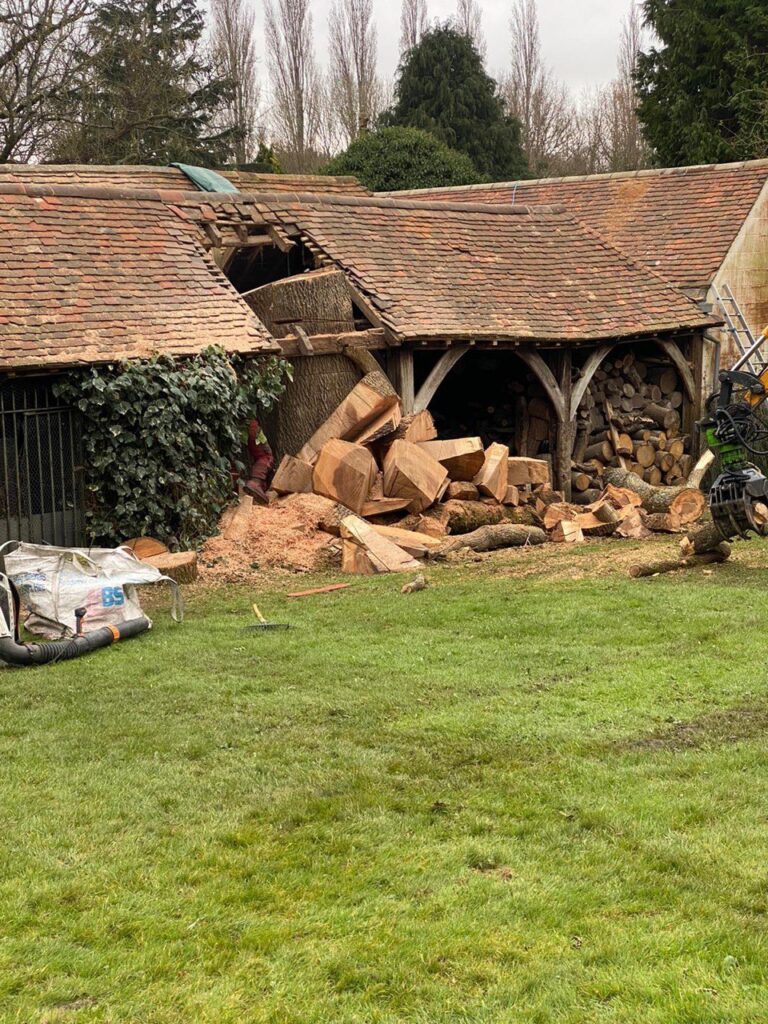The Role of Bracing and Cabling in Sectional Dismantling: Ensuring Safety and Precision
Introduction: Sectional dismantling is a tree removal method that offers precision and safety when handling trees in challenging situations. However, not all trees are straightforward to dismantle, especially when dealing with weak or structurally compromised trees. In such cases, the use of bracing and cabling becomes invaluable. At Watton Tree Surgeons, we understand the significance of these techniques in sectional dismantling. This blog post will delve into their essential role in ensuring safety and precision.
Understanding Sectional Dismantling
Before we dive into the role of bracing and cabling, let’s briefly recap what sectional dismantling entails. Sectional dismantling is a method used to safely remove trees that are close to structures, sensitive landscapes, or have structural issues that make traditional felling impractical. It involves carefully removing a tree into smaller, manageable sections to minimise risks and damage to the surroundings.
The Need for Bracing and Cabling
While sectional dismantling is safe, certain trees may have weakened or unstable branches or trunks that pose additional challenges. This is where bracing and cabling come into play:
1. Structural Support: Bracing and cabling are techniques used to support weakened or compromised parts of a tree. This added support ensures that branches or sections can be safely removed without collapsing prematurely.
2. Safety: The safety of tree care professionals and property occupants is paramount. Bracing and cabling help prevent accidents by securing weak or damaged portions of the tree during the dismantling process.
3 Precision: Precision is crucial when dismantling a tree in sections. Bracing and cabling allow more controlled and deliberate removal of sections, reducing the risk of unexpected falling limbs or trunk sections.
4. Minimised Damage: By supporting compromised areas, bracing and cabling help minimise damage to surrounding structures, landscapes, and vegetation. This is particularly important when working in residential or urban areas.
The Bracing and Cabling Process
The process of bracing and cabling typically involves the following steps:
- Assessment: A thorough assessment of the tree’s condition is conducted to identify weak or compromised branches or sections.
- Installation: Strong and non-invasive cables and braces are strategically installed to support the identified weak areas.
- Secure Fastening: The cables and braces are securely fastened to ensure stability.
- Dismantling: With the support, the tree can be safely dismantled in sections, starting with the most problematic areas.
- Monitoring: Throughout the process, the tree care professionals closely monitor the stability of the supported sections.
Conclusion: Bracing and cabling play a crucial role in ensuring the safety and precision of sectional dismantling, especially when dealing with trees that have structural issues or compromised branches. These techniques provide the necessary support to weaken tree sections, allowing for controlled removal while minimising risks and damage. At Watton Tree Surgeons, we prioritise safety and precision in all our tree removal projects. Bracing and cabling are just some of our toolkit tools to ensure a successful and safe sectional dismantling process. If you have a tree that needs removal in a challenging environment, rest assured that our experienced team can handle it with the utmost care and professionalism.
Call us on: 01953 667 637
Click here to find out more about Watton Tree Surgeons
Click here to complete our contact form and see how we can help with your tree’s needs.

